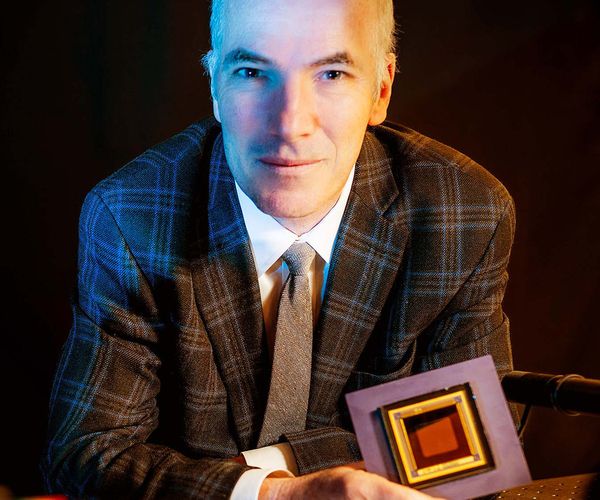BU’s Innovator of the Year Has Pioneered Devices to Advance Astronomy, Microscopy, Eye Exams
By Andrew Thurston
The light from the stars filling the sky travels mind-boggling distances to reach us: the nearest star, beyond our own, is about 25 trillion miles from Earth. For most of its journey to our planet, that light is undisturbed, flying parallel and unimpeded through the vacuum of space. But then, in the very last microseconds, our atmosphere gets in the way, and the light bends.
If you’re looking through a telescope, “the result is that the image is blurry, because not all of the light is getting to the right focus,” says Boston University mechanical engineer Thomas Bifano.
For astronomers studying distant stars, blurry just won’t cut it.
But Bifano created a solution: a mirror that can shift its surface as quickly as every millisecond to compensate for the atmosphere’s fluctuating effect, pulling the image into focus. It’s a technology, called MEMS (micro-electro-mechanical systems) deformable mirrors, that he’s also used to improve eye exams, satellite communications, and imaging research—and that has now helped earn Bifano BU’s Innovator of the Year award.
The director of the University’s cross-disciplinary Photonics Center, Bifano is the 14th winner of the award, given to an “outstanding faculty member who has translated world-class research into an invention or innovation that benefits humankind.” A holder of 10 patents, he’s also chief technology officer of Boston Micromachines Corporation, a company he cofounded to develop and market deformable mirrors and other optics products.
